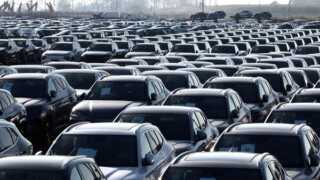Share via: China sold more EVs than any other nation last year, and insurance premiums collected from these cars touched 141 billion yuan. …Read More China sold more EVs than any other nation last year, and insurance premiums collected from these cars touched 141 billion yuan (REUTERS) Get Launch Updates on Notify me The world’s largest electric vehicle market, China, is running into a new kind of bottleneck. Not with batteries or supply chains, but with insurance. For all the millions of EVs that now hum along Chinese roads, the companies meant to cover their risks are bleeding red ink. Losses have piled up for at least three years, and the industry is still fumbling with how to price this new reality. A market growing faster than the mathChina sold more EVs than any other nation last year, and insurance premiums collected from these cars touched 141 billion yuan, a report by Bloomberg stated. On paper, that looks like a booming business. But the numbers tell a different story. In 2024, insurers lost 5.7 billion yuan underwriting EV policies, a combined ratio well above 100 percent. Put simply, payouts exceeded premiums. Also Read : BYD profit falls 30% as price war, weaker demand hit China’s EV giant The reason isn’t demand, that is rising at breakneck speed. It is risk. Younger EV owners file more claims than their gasoline-driving counterparts, repairs cost far more and the models keep changing faster than insurers can update their risk tables. What worked for combustion cars, decades of actuarial data and predictable repairs, simply doesn’t hold for an industry where one-third of a car’s value sits in its battery pack, vulnerable to the slightest misjudgment on a speed bump. Industry struggles, government intervenesRegulators know the cracks are widening. Earlier this year, authorities launched an online platform called “Easy to Insure,” meant to guarantee EV owners at least basic access to insurance. More than 5,00,000 vehicles have been covered through it. There are also guidelines urging lower parts costs, data sharing between insurers and automakers, and a ban on rejecting customers. Still, insurers face a dilemma. Pricing is capped within narrow government bands, leaving little room to adjust premiums for drivers who may be more accident-prone, like those using EVs for ride-hailing. Smaller insurers, already struggling with traditional car policies, are being squeezed out. The big three, Ping An, PICC, and China Pacific, dominate, but even they admit profitability in EV coverage remains elusive. Also Read : China powers global EV rise, yet subsidy cuts and tariffs cloud the road ahead What lies aheadSome relief comes from experimentation. Ping An says it has built technology to distinguish ride-hailing drivers from private users, and has worked with automakers to rethink design around accident scenarios. Tesla and BYD are setting up their own insurance ventures, while Xiaomi and Volkswagen are testing partnerships in the space. Analysts, however, warn that real stability may be three years away. The irony is stark. As China accelerates into an electric future, insurance, the quiet safety net of any mobility revolution, is struggling to keep up. EV adoption has not slowed, but if insurers cannot find sustainable models, the cost of protection could become the next big speed breaker. Get insights into Upcoming Cars In India, Electric Vehicles, Upcoming Bikes in India and cutting-edge technology transforming the automotive landscape. First Published Date: 22 Sept 2025, 08:44 am IST
Source: hindustantimes.com






